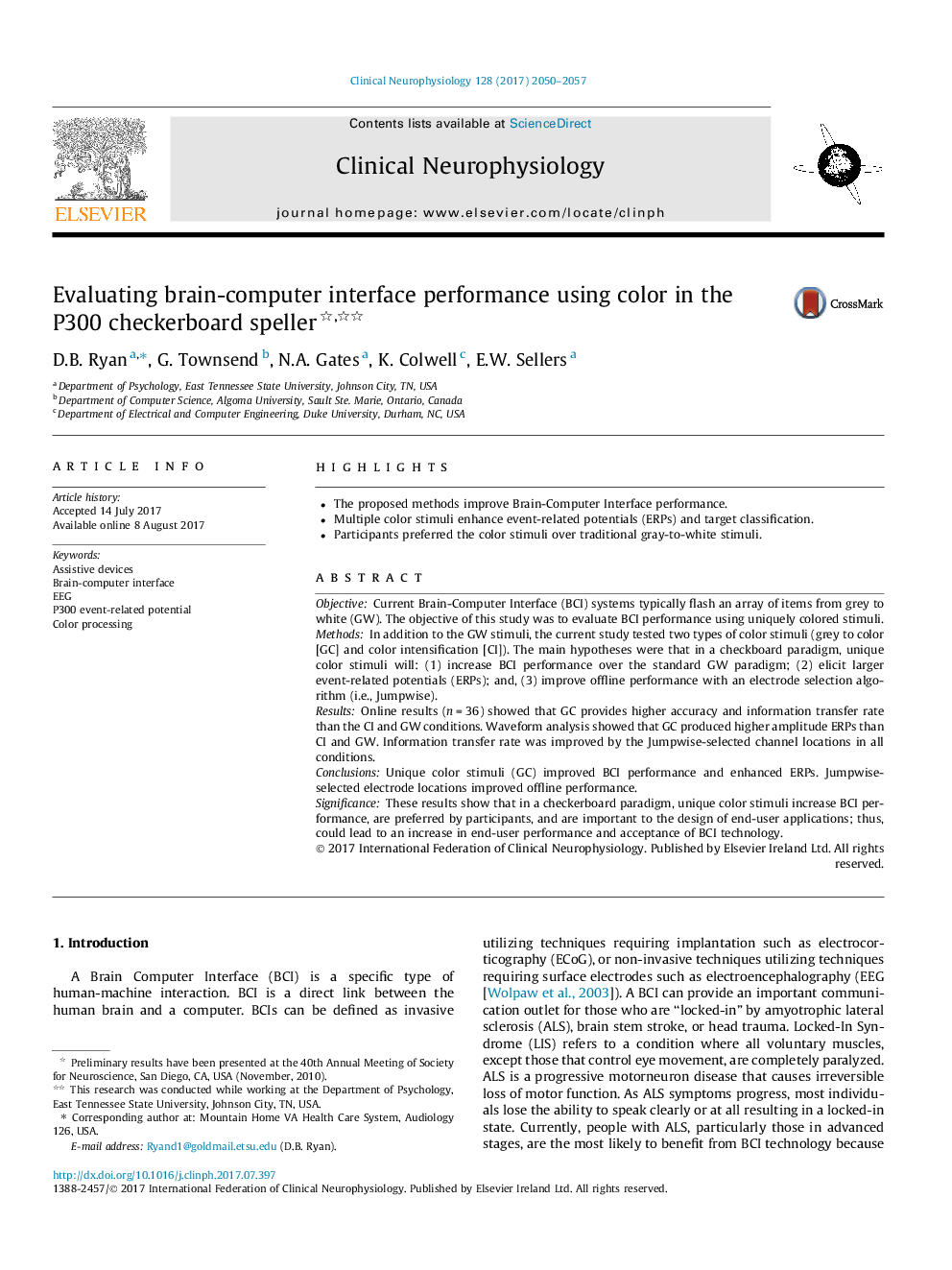| Article ID | Journal | Published Year | Pages | File Type |
|---|---|---|---|---|
| 5627701 | Clinical Neurophysiology | 2017 | 8 Pages |
â¢The proposed methods improve Brain-Computer Interface performance.â¢Multiple color stimuli enhance event-related potentials (ERPs) and target classification.â¢Participants preferred the color stimuli over traditional gray-to-white stimuli.
ObjectiveCurrent Brain-Computer Interface (BCI) systems typically flash an array of items from grey to white (GW). The objective of this study was to evaluate BCI performance using uniquely colored stimuli.MethodsIn addition to the GW stimuli, the current study tested two types of color stimuli (grey to color [GC] and color intensification [CI]). The main hypotheses were that in a checkboard paradigm, unique color stimuli will: (1) increase BCI performance over the standard GW paradigm; (2) elicit larger event-related potentials (ERPs); and, (3) improve offline performance with an electrode selection algorithm (i.e., Jumpwise).ResultsOnline results (n = 36) showed that GC provides higher accuracy and information transfer rate than the CI and GW conditions. Waveform analysis showed that GC produced higher amplitude ERPs than CI and GW. Information transfer rate was improved by the Jumpwise-selected channel locations in all conditions.ConclusionsUnique color stimuli (GC) improved BCI performance and enhanced ERPs. Jumpwise-selected electrode locations improved offline performance.SignificanceThese results show that in a checkerboard paradigm, unique color stimuli increase BCI performance, are preferred by participants, and are important to the design of end-user applications; thus, could lead to an increase in end-user performance and acceptance of BCI technology.
